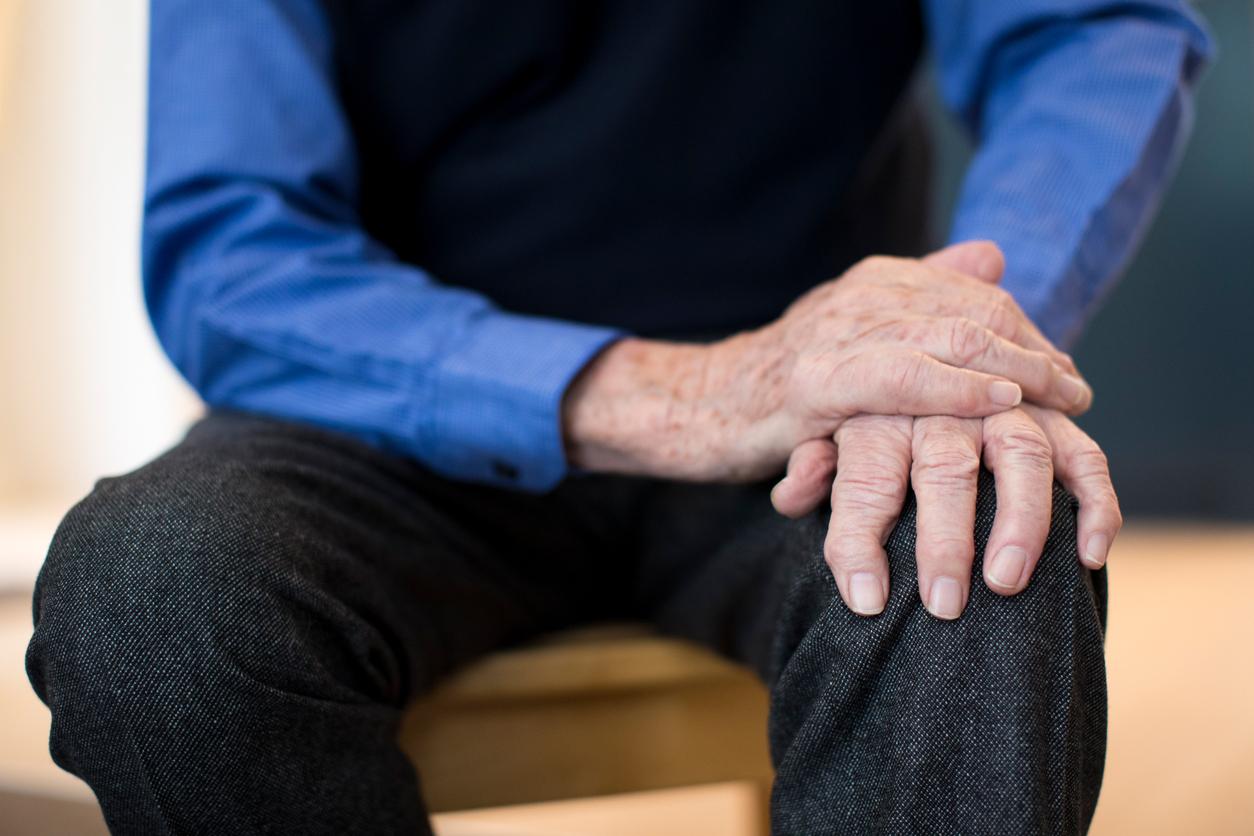A “neuroprosthesis” made it possible to correct the walking disorders associated with Parkinson’s disease in a 62-year-old patient.

- Living with Parkinson’s disease for three decades, Marc, 62, has regained almost normal walking thanks to a neuroprosthesis.
- Unlike conventional treatments for Parkinson’s disease, which target regions of the brain directly affected by the loss of dopamine-producing neurons, this neuroprosthesis targets the area of the spinal cord responsible for activating leg muscles during walking.
- In France, the prevalence of Parkinson’s disease is constantly increasing.
In a study published in Nature Medicinescientists detail the development process of the neuroprosthesis used to treat a first patient with Parkinson’s disease, “allowing him to walk with fluidity, confidence and without falling”.
Parkinson’s disease and walking disorders
Disabling gait disorders occur in approximately 90% of people with advanced Parkinson’s disease and are often resistant to currently available treatments. “Developing new strategies allowing patients to walk smoothly again, while avoiding the risk of falling, is therefore a priority for the research teams who have been working on this disease for many years”, explain the scientists in a press release. This is the case of Erwan Bézard, neuroscientist at Inserm, and his team at the Institute of Neurodegenerative Diseases (CNRS/University of Bordeaux). For several years, he has been collaborating with a Swiss team led by Professors Grégoire Courtine, neuroscientist, and Jocelyne Bloch, neurosurgeon.
In 2016, the Franco-Swiss team had, for example, already published in Nature work showing the effectiveness of a brain-spinal cord interface – called a “neuroprosthesis” – in restoring the functioning of a paralyzed limb following a spinal cord injury. The promising results had encouraged scientists to continue their efforts and gave hope for beneficial effects in Parkinson’s disease with a similar device.
Parkinson’s: the neuroprosthesis targets the spinal cord to restore walking
In this new study, the team therefore developed a comparable neuroprosthesis to compensate for falls and the freezing phenomenon (when the feet remain glued to the ground while walking, Editor’s note) associated with Parkinson’s disease.
Unlike conventional treatments for Parkinson’s disease, which target regions of the brain directly affected by the loss of dopamine-producing neurons, this neuroprosthesis targets the area of the spinal cord responsible for activating leg muscles during walking.
Drawing on their complementary expertise, the French and Swiss teams were able to develop and test the neuroprosthesis on a non-human primate model reproducing locomotor deficits due to Parkinson’s disease. The device not only made it possible to reduce locomotor deficits, but also to restore walking capacity in this model by reducing freezing phenomena.
“The idea of developing a neuroprosthesis electrically stimulating the spinal cord to harmonize the gait and correct the locomotor disorders of Parkinson’s patients is the result of several years of research on the treatment of paralysis due to spinal cord injuries”, explains Erwan Bézard, Inserm research director at the Institute of Neurodegenerative Diseases (University of Bordeaux/CNRS).
“Previous attempts to stimulate the spinal cord have failed because they stimulated the locomotor centers as a whole without taking into account physiology. In this case, it is a stimulation that superimposes on the natural functioning of the neurons of the spinal cord by stimulating, with spatiotemporal coordination, the different muscle groups responsible for walking”add Grégoire Courtine and Jocelyne Bloch.
Parkinson’s sufferer, Marc regains almost normal walking with the neuroprosthesis
A first patient, aged 62 and living with the disease for three decades, was operated on two years ago at the Vaud University Hospital Center (CHUV) in Lausanne. During a precision neurosurgical procedure, Marc, originally from Bordeaux, was equipped with this new neuroprosthesis, consisting of a field of electrodes placed against the region of his spinal cord which controls walking and a generator electrical impulses implanted under the skin of his abdomen.
Thanks to the targeted programming of spinal cord stimulations which adapt in real time to his movements, Marc quickly saw his walking problems fade away. After a few weeks of rehabilitation with the neuroprosthesis, he regained almost normal walking.
This neuroprosthesis therefore opens up new perspectives for treating the walking disorders suffered by many people with Parkinson’s disease. However, at this stage, this therapeutic concept has demonstrated its effectiveness in a single person, with an implant that still needs to be optimized for large-scale deployment.
Scientists are therefore working to develop a commercial version of the neuroprosthesis integrating all the essential functionalities for optimal daily use. Clinical trials on a larger number of patients are also due to start next year. “Our ambition is to generalize access to this innovative technology in order to significantly improve the quality of life of patients with Parkinson’s disease throughout the world,” conclude the researchers.

In France, the prevalence of Parkinson’s disease is constantly increasing
With 272,500 patients currently identified, 1 in 50 French people will be affected by Parkinson’s disease during their lifetime. The prevalence of this pathology is constantly increasing in our country, which has 2.5 times more patients than in 1990. “This phenomenon is essentially due to the aging of the population and probably to hormonal or environmental factors whose exact impact on the disease is not yet known,” concludes Jean-Louis Dufloux, president of the France Parkinson association.
Parkinson’s disease is a progressive neurodegenerative disorder with no cure.














